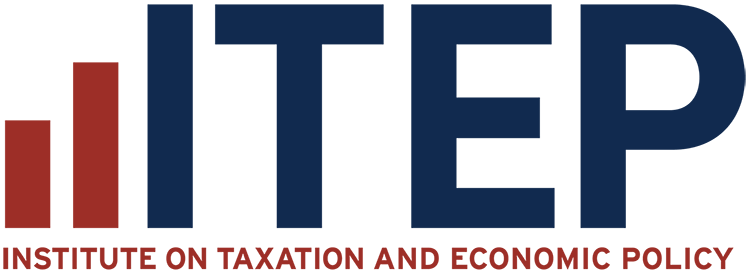State lawmakers frequently make claims about how proposed tax changes would affect taxpayers at different income levels. Yet these lawmakers routinely ignore one important consequence of their tax reform proposals: the effect of state tax changes on their constituents’ federal income taxes. Wealthier taxpayers can use the federal income tax to partially offset their state and local income and property taxes. This “federal offset” has important implications for how state tax changes affect people. This policy brief explains this important but often-forgotten link between state and federal taxes.

Publication Search Results
How Property Taxes Work
The property tax is the oldest major revenue source for state and local governments. At the beginning of the twentieth century, property taxes represented more than eighty percent of state and local tax revenue. While this share has diminished over time as states have introduced sales and income taxes, the property tax remains an important mechanism for funding education and other local services. This policy brief discusses why property is taxed and how property taxes are calculated.
Income Tax Simplification: How to Achieve It
Simplicity is generally seen as a virtue in state tax systems. Simplicity makes it easier for taxpayers to understand (and to pay) their taxes, and makes it easier for tax administrators to collect taxes fairly. In recent years, state lawmakers have proposed a wide variety of income tax changes under the guise of simplification. Yet not all of these purported tax simplification measures are well-designed to achieve it–and some measures would unnecessarily reduce the fairness of the income tax. This policy brief evaluates options for making state income taxes less complicated.
Tax Policy Nuts and Bolts: Understanding the Tax Base and Tax Rate
This policy brief explains two basic, but important tax policy terms- the tax base and tax rate. Since these concepts are often confusing, having a grasp on the ins and outs of tax bases and rates will help provide a better understanding of how all state and local taxes work.
Introduction to ITEP’s Tax Incidence Analysis
Everyone agrees that tax “fairness” is important–even though there is often disagreement on what fairness means. A well-informed debate on who should pay the most taxes must start by assessing who actually does pay the most–and the least. Too often taxes are studied only with an eye towards tax rates instead of an understanding of how taxes impact people depending on their income. Tax incidence analyses answer basic questions by measuring how taxpayers at different income levels are affected by the current tax system and various tax reform alternatives. This policy brief provides a basic introduction to using ITEP’s tax incidence analyses.
How State Corporate Income Taxes Work
A robust corporate income ensures that profitable corporations that benefit from public services pay their fair share towards the maintenance of those services, just as working people do.. More than forty states currently levy a corporate income tax. This policy brief explains why corporations should be taxed and the basic workings of the corporate tax.
The “QPAI” Corporate Tax Break: How it Works and How States Can Respond
The past quarter century has seen a dramatic decline in the yield of corporate income taxes at both the federal and state levels. Major federal corporate tax legislation enacted in 2004 created a new tax break, known as the “Qualified Production Activities Income” (QPAI) deduction that has further accelerated the decline of the corporate tax. This policy brief evaluates the QPAI deduction and discusses possible state policy responses.
“Nowhere Income” and the Throwback Rule
Every state that levies a corporate income tax must determine, for each company doing business within its borders, how much of the company’s profits it can tax. One factor that all such states use to make this determination is the percentage of the company’s nationwide sales that can be attributed to the state. Ideally, all of a company’s sales would be attributed to the states in which it operates, but, due to differences among states’ corporate income tax rules, this is not always the case. In some instances, a portion of a business’ sales are not attributed to any state, which means that a corresponding portion of its profits go untaxed, a phenomenon often referred to as “nowhere income.” This policy brief explains how this phenomenon arises and discusses how a throwback rule can be used to ensure that all corporate profits are subject to taxation.
Combined Reporting of State Corporate Income Taxes: A Primer
Over the past several decades, state corporate income taxes have declined markedly. One of the factors contributing to this decline has been aggressive tax avoidance on the part of large, multi-state corporations costing states billions of dollars. The most effective approach to combating corporate tax avoidance is the use of combined reporting, a method of taxation currently employed in more than half of the states with a corporate income tax. Eight states have enacted legislation to institute combined reporting within the past five years. Commissions and lawmakers in several other states, such as North Carolina, Maryland, Rhode Island and Kentucky, have recently recommended its adoption. This policy brief explains how combined reporting works.
Sales Tax Holidays: A Boondoggle
Sales taxes are among the most important–and most unfair–taxes levied by state governments. Sales taxes accounted for a third of state taxes in 2011, but sales taxes are regressive, falling far more heavily on low- and middle- income taxpayers than on the wealthy. In recent years, lawmakers thinking they might lessen the impact of these taxes have enacted “sales tax holidays” that provide temporary sales tax breaks for purchases of clothing, computers, and other items. This policy brief looks at sales tax holidays as a tax reduction device.
